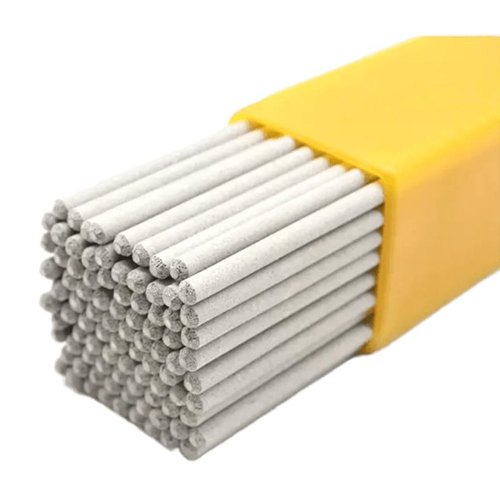CHARACTERISTICS & APPLICATIONS
íshín-383R has nominal composition (wt. %) of weld metal 28 Cr, 31.5 Ni, 3.7 Mo, 1 Cu. These electrodes are used to weld base metal of a similar composition to itself and to other grades of stainless steel. Type E383 weld metal is recommended for sulfuric and phosphoric acid environments. The elements C, Si, P, and S are specified at low maximum levels to minimize weld metal hot cracking and fissuring (while maintaining the corrosion resistance) frequently encountered in fully austenitic stainless steel weld metals.
The covering for these electrodes generally contains readily ionizing elements to stabilize the arc for welding with alternating current. Electrode sizes 4.0 mm and smaller may be used in all positions of welding.
Storage and Drying Conditions: Hydrogen can have adverse effects on welds in some steels under certain conditions. One source of this hydrogen is moisture in the electrode coverings. For this reason, the proper storage, treatment, and handling of electrodes are necessary.
Holding Ovens: 125°C–150°C.
Drying Conditions: 250°C–425°C for 1 hour prior to use.
CHEMICAL COMPOSITION OF UNDILUTED WELD
| C | Cr | Ni | Mo | Nb+Ta | Mn | Si | P | S | N | Cu | Others |
| 0.03 | 26.5-29.0 | 30.0-33.0 | 3.2-4.2 | NS | 0.5-2.5 | 0.90 | 0.02 | 0.02 | NS | 0.6-1.5 | NS |
Single values are maxima, except where specified otherwise.
ALL-WELD-METAL MECHANICAL PROPERTIES
| Tensile Strength, MPa | Yield Strength, At 0.2% Offset, MPa | Elongation % | Lateral Expansion, mm | Charpy V-Notch Impact at NS°C, Joules |
| 520 | NS | 30 | NS | NS |
Single values are minimal.
ELECTRODE SIZE & WELDING CURRENT (AC and DCEP)
| DIAMETER, mm | LENGTH, mm | Amperes |
| 2.50 | 350 | 65-90 |
| 3.15, 3.20 | 350 | 90-120 |
| 4.00 | 350 | 120-150 |
| 5.00 | 350 | 160-200 |
WARNING: Safety and health information is available from many sources, including, but not limited to Safety and Health Fact Sheets listed in A11.3, ANSI Z49.1 Safety in Welding, Cutting, and Allied Processes published by the American Welding Society, 8669 Doral Blvd., Suite 130, Doral, FL 33166., and applicable federal and state regulations. The Safety and Health Fact Sheets are revised, and additional sheets added periodically.

